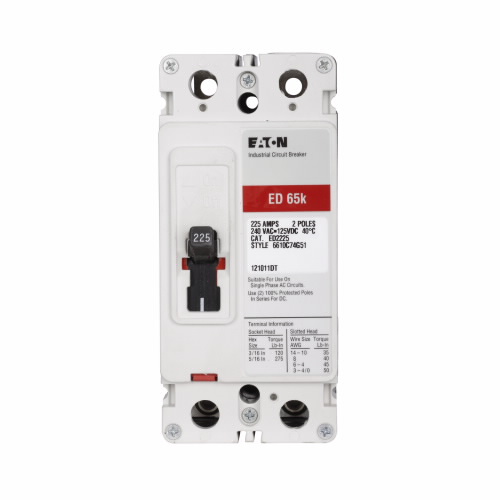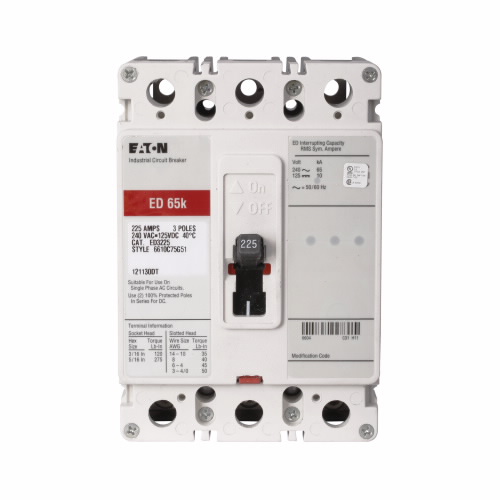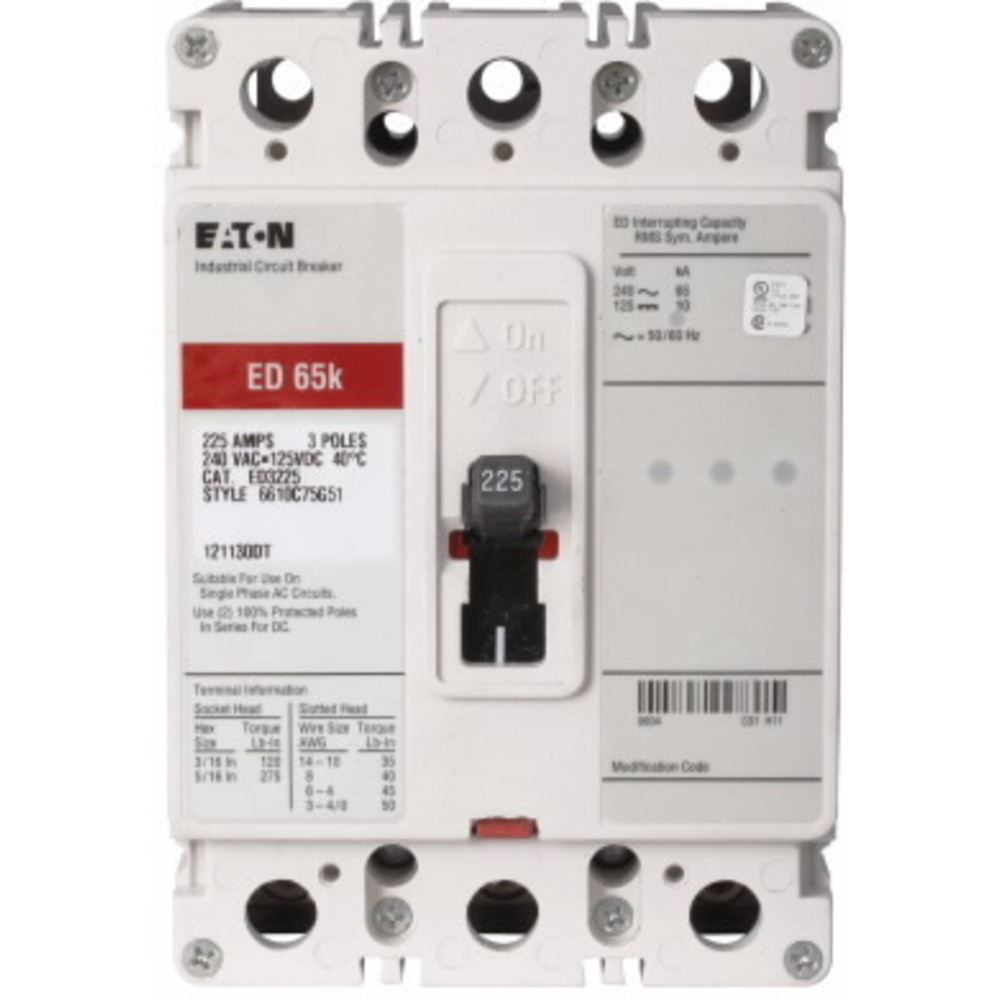Eaton ED2125 circuit breaker is an Eaton C Series circuit breaker that prevents electrical damage to connected devices due to excess current or short circuits. It has a completely moulded case with an F-frame for housing current-carrying parts, trip devices & mechanisms inside it, enhancing durability. This circuit breaker can protect devices like receptacles, branch circuits, external motors and HVACs.
Features:
- Eaton ED2125 circuit breaker has bolt-on mounting style and line & load terminals for easy installation on panels and installation of circuit wires, respectively.
- This 2-pole complete breaker is equipped with fixed thermal & magnetic contacts for long-time and instantaneous tripping performance.
- The unit's sliding handle has three positions (ON, OFF and trip) for easy identification of the breaker's status.
Compatible Accessories:
- Load Centres, Panels & Switchboards: This Eaton ED2125 breaker can be installed easily onto panelboards, switchboards & load centres.
Standards and Approvals:
Frequently Asked Questions:
Q. What are the different performance ratings of this Eaton ED2125 circuit breaker?
A. Eaton ED2125 breaker has a current rating of 125A, a voltage rating of 240VAC / 125VDC and an interrupt rating of 65kA at 240VAC.
Q. How to install this circuit breaker?
A.
- Mount this unit on the panel or mounting surface, ensuring that the accessory wirings are reachable and the unit can be mounted. Install & tighten the breaker mounting using screws, washers & nuts.
- Install an optional terminal end cover. Connect the line & load terminals with the accessory leads and install a terminal shield & interphase barrier if needed.
- Finally, check all the mounting & terminal connecting hardware.
Q. What are points to inspect before operating this Eaton ED2125 circuit breaker?
A.
- Remove the dust, dirt, grease, moisture or foreign contaminants from the unit.
- Check that the unit's switch is free to move by switching the unit ON & OFF several times.
- Press the optional push-to-trip button at the bottom side of the unit to mechanically trip & test for proper functioning.
- Inspect the unit of any cracks, chipping or discolouration. Tighten the terminals & connectors. Check the mounting hardware.
- Remove any safety hazards near the installed area.
 Change Country
Change Country

 In Stock : 65 Units
In Stock : 65 Units

